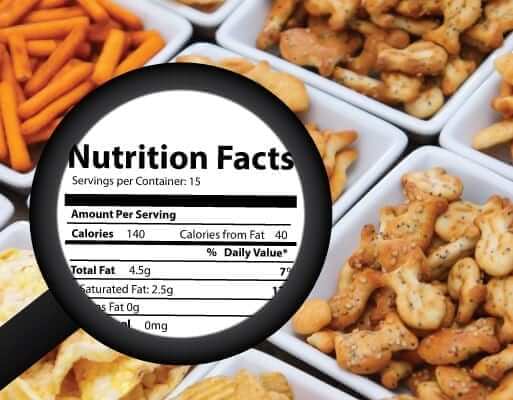It always amazes me to hear some of the pertinent questions asked by our patients with diabetes when in diabetes management sessions. I’m certain that many of you have similar concerns but may not have anyone locally to ask or be the person to write in to ADW diabetes. So, I intend to share recently asked questions to offer you the needed information. Here we go:
I see additives listed on food labels all the time and have no idea what they are. I do not know if they are harmful or helpful. What are they and what do they do?
Food additives are “any substance added to foods.” Food additives are used to “maintain freshness, improve taste and color, and maintain nutritional value.” On the other extreme, it is often said “they are commonly added to food but do not add value to your food.” I am not defending food additives or telling you that they are healthful. I am just making you more familiar with the information.
Some additives are stabilizers, thickeners and gelling agents which help processed foods have “structure, viscosity and stability.” They form stiffness or stabilize the food. Stabilizers/emulsifiers usually include pectin, lecithin (from egg yolk or corn) AgarAgar (algae) and carrageenan (seaweed). Foods like water and oil which do not mix, will require a stabilizer. Stabilizers are used in mayonnaise, margarine, dairy products and salad dressings. Thickeners are flavorless powders or gums that work under many conditions. Thickeners include starches, pectin and gums. They are used to thicken soups, sauces and puddings. Gelling agents include gelatin, gums, starches and pectin. Gelling agents are added to jellies, jams, desserts, yogurts and candies. These additives are identified on the label to help consumers. All food additives must be approved by the FDA prior to use. Most food additives are from natural products but up to 1% can be from synthetic ingredients.
How safe are additives? Although they are carefully regulated by the FDA, some individuals suffer from side effects especially if eaten in large amounts. People can experience nausea, bloating, gas or stomach pain. Certain additives can have food/drug interactions. Examples would be anticoagulants (blood thinners) and anti-hypertensives (blood pressure) may be affected by carrageenan and antibiotics/cholesterol drugs may be affected by pectin. There are over 3000 ingredients on the FDA list considered food additives. Some food additives which may be considered “riskier or questionable for health” include: high fructose corn syrup, MSG, food dyes, Trans-fat, sodium nitrate and BHA/BHT.

MSG is a flavor enhancer found in snack foods, Chinese food, cookies, frozen dinners and lunch meats. People often complain of headaches, being spacey, feeling fatigued and weight gain. Some people are highly sensitive to MSG and others are extremely allergic.
Food dyes like red, blue and yellow, are often found in cereals, sport drinks, snacks, American cheese, maraschino cherries, and fruit cocktail. These are artificial dyes and may cause behavioral problems or allergies, especially in children.
Sodium nitrate is added to processed and preserved meats including luncheon meats, bacon, hot dogs, and smoked fish. It may cause allergic reactions.
BHA/BHT is an added preservative in chewing gum, chips, cereals and Jello and may cause a neurological effect.
The best way to avoid food additives would be to eliminate bagged, boxed and processed foods and concentrate on whole simple foods like whole fruits, vegetables, lean grass-fed meats, fatty fish, no preservative whole grain bread and stick to “clean eating” as much as possible.
What is the best single therapy to sustain long term weight loss when you have diabetes?
Unfortunately, there is no single discipline, diet or way to achieve this. Positive ways for sustained weight loss would be to use portion control, eating on a schedule, making wise choices of foods, mindful eating, home food preparation, drinking calorie free liquids, counseling (when necessary) and daily exercise. Consider working with a registered dietitian who specializes in diabetes. In addition, some patients may need to utilize surgical procedures like gastric bypass, gastric band or gastric sleeve, weight loss drugs or other pharmaceutical interventions. What affects body weight/body fat? The medical world used to assume weight was completely dependent on “calories in vs. calorie expenditure.” Now we have increased knowledge and understand that hormones, metabolic rate, sleep quality and patterns, medications, age, genetics, chronic diseases, food quality, quantity and timing of food plus physical activity play a significant role.
What is the “weight neutral movement?”
The weight neutral movement is a “therapeutic approach to improving the health of individuals by focusing less on BMI (body mass index) and more on positive lifestyle behaviors.” This approach understands that focusing only on BMI may cause “weight cycling” which is the gaining, losing and regaining of weight which is more detrimental to health than being weight stable. “Weight cycling” has been associated with chronic systemic inflammation, insulin resistance, and bone fractures due to bone loss, emotional distress, cardiovascular disease, decreased metabolic rate and elevated cholesterol. Thinking in “weight neutral” terms should not give you a free pass to a poor lifestyle but should encourage positive physical, behavioral, and psychological interventions. Gaining, losing and regaining weight is bad for your general health and diabetes control.
I am really diligent during the daytime about avoiding and snacking on chips and desserts, then I fall apart when the TV goes on after dinner. I go to bed with high blood sugars and I feel stuffed and uncomfortable. I wake up full and refuse to eat breakfast, because today “I will be good”. Then, pattern starts again! What can I do to break this pattern even if I am eating only sugar-free treats?

What is the real story about saturated fat and how much should I eat?
Now “they say” it is good for me! Not a session goes by without this question being asked. All the reports are confusing and “eating saturated fat” still remains as a heated debate in the medical world. No one is really sure what the daily optimal level of dietary fat is, including the government’s official guidelines. Top physicians in the nutritional world state that, “The emphasis should not focus on a single food or food group but on the whole diet.” Fat intake is only one piece of the puzzle. According to Dr. Walter Willett, MD, PHD, affiliated with Harvard School of Public Health, “an occasional piece of buttered toast isn’t going to kill anyone, but opting for poly-and mono-unsaturated fats is likely the healthier choice.” Saturated fats are animal based foods such as lamb, beef, pork, poultry skin, cream, butter, milk and cheese. Saturated fats should not be replaced with more carbohydrates but with additional mono, poly–unsaturated fats. Eat olives, avocados, olive oil, canola oil, tree nuts, and sunflower and safflower oil. Remember, fats are high in calories so even healthier ones can add calories and weight. Eating a diet higher in mono-poly-unsaturated fats will lower your LDL cholesterol and the risk of heart disease.
What are the best practices for insulin/GLP1 injection techniques?
The Forum for Injection Technique {FIT} was established in 2009 in the UK by diabetes nurse specialists. Injectable therapies include all types of insulin and GLP1 Injectables. Currently, a 47 page document is utilized for the best practice along with a final chapter summarizing key aspects called the “Golden Rules”. Included are psychological aspects offering counseling for those who fear injections, knowing to use the smallest needle possible (4mm) even when overweight, understanding the need to inject into the subcutaneous tissue (fat) instead of intramuscularly and rotation of sites to prevent lipohypertrophy (skin puckering with less insulin absorption). It also contains suggestions and recommendations designed especially for children with diabetes. Reported in Diabetes Forecast in 2014, “7 billion sharps get thrown away in the US.” The document discusses proper needle and lancet disposal. Check with your own state for guidelines on proper needle disposal. Find a CDE/nurse educator to help with your injection technique for best results.
What is the current most popular and utilized diabetes app used by patients with diabetes?
According to Dia Tribe, a well-known website for diabetes professionals and patients, the most popular app is MySugr. It offers “coaching and tools to track blood sugar, medications and exercise” and gives the patient the confidence they need to help manage their disease. Many on the team who created the app also live with diabetes and know what is needed on a daily basis. MySugr is free but can be upgraded for $ 2.99 a month, less than a daily cup of coffee. It includes photos of meals, blood sugar reminders, shareable PDF and Excel reports. Over 1 million US registered users utilize MySugr. It is available on the iOS App Store and Google Play. They are constantly working on device integrations but it already integrates with Aviva Connect, Free Style Libre and Dexcom G4/G5 CGM.
There is so much to learn when you have diabetes since technology, drugs, advice and treatments keep changing. Stay informed and up to date by reading all you can.
Have a question or comment? Then post below, no registration required. I would love to hear from you!
NOTE: Consult your Doctor first to make sure my recommendations fit your special health needs.







I find a lot of written information about effects of low blood sugar on motor skills and brain function. I see a lot less on high blood sugar and how it effects motor skills and brain function. And yet as a mother to a teenager who has had Type 1 for over 10 years, I know I see her motor skills effected by high sugars. Her reflexes are off, her judgement is impaired, her ability to control herself is impaired. Can you direct me to any specific studies on this subject? I am looking for documentation from professionals to substantiate my insights.
Hi Elizabeth,
You are correct in your observation in that both high and low blood sugars have an affect on mood, cognition and abilities. High blood sugars can give you “fog brain ” and have an impact on decision making processes. This can affect both people with type 1 or 2 diabetes. Long term hyperglycemia seems to have a bigger impact than occasional episodes of acute/short term hyperglycemia. Poor glycemic control can lead to “inflammation ,depression and micro vascular disease.” Please check out Diapedia -the living textbook of Diabetes. It includes studies from Clinical Endocrinology and The Lancet. Also look at the US National Library of Medicine and National Institutes of Health. Time magazine had a good article based on a study published in the Journal of Neurology. Your goal as well as your daughters’ should be to keep these episodes of high blood sugars to a minimum thru better management. Rely on her medical care team and diabetes educator to help give her more information and tools to keep blood sugars controlled. Best of luck ! Nurse Robbie.